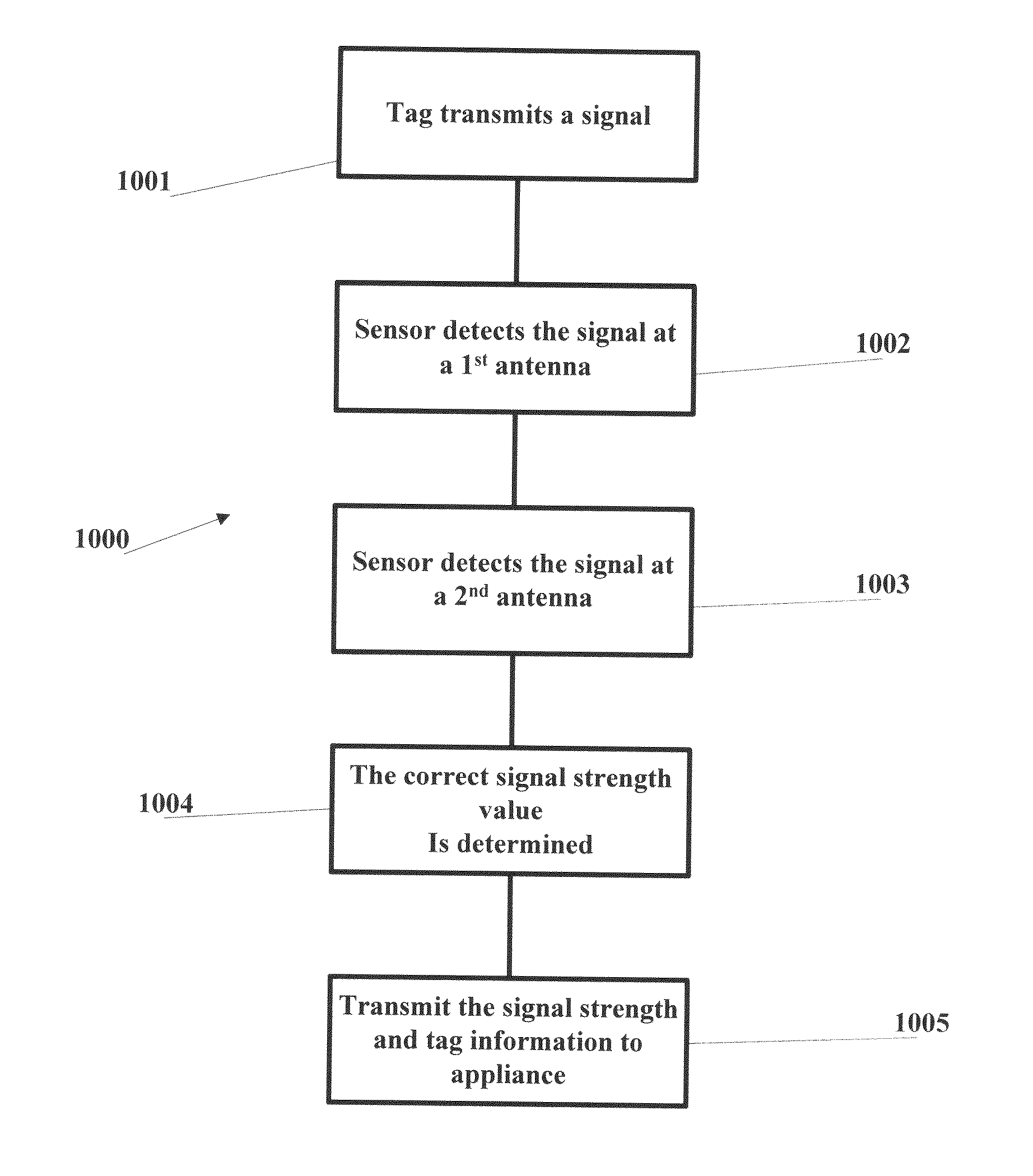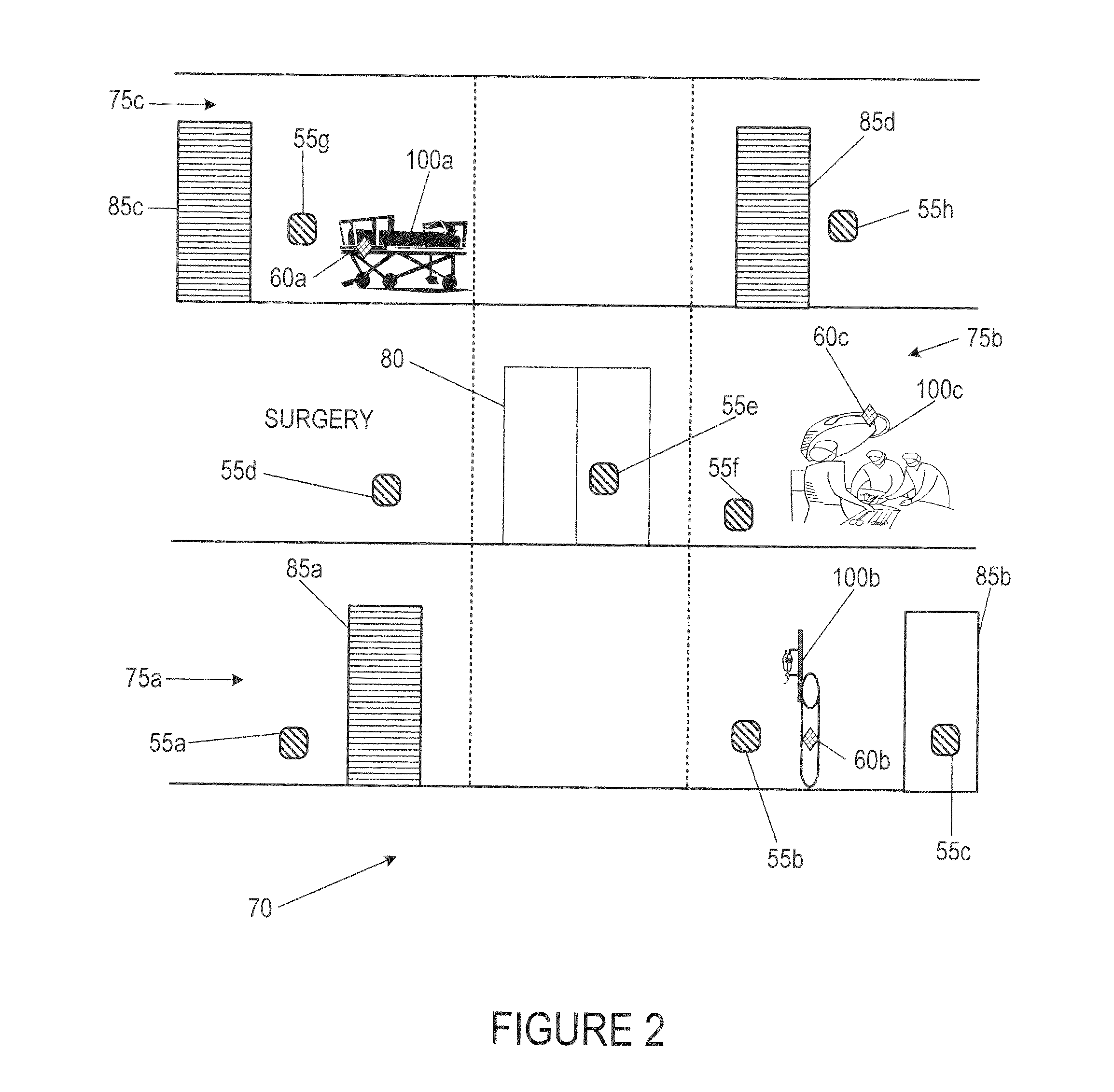Antenna Diversity For Wireless Tracking System And Method
a wireless tracking and diversity technology, applied in the field of wireless tracking systems and objects wireless tracking, can solve the problems of inability to provide accurate location estimates for in-building environments, inability to provide single characteristics accurate location estimates, and sometimes erroneous assumption, etc., to improve the accuracy of received signal strength indications
- Summary
- Abstract
- Description
- Claims
- Application Information
AI Technical Summary
Benefits of technology
Problems solved by technology
Method used
Image
Examples
Embodiment Construction
[0048]As shown in FIGS. 1-4, a system for tracking objects within a facility is generally designated 50. The system 50 is capable of determining real-time location of an object 100 within a facility 70. The system 50 preferably includes a plurality of sensors 55, a plurality of bridges 56, a plurality of tags 60 and at least one central processor 65. One example of the components of the system 50 is disclosed in U.S. Pat. No. 7,197,326, for a Wireless Position Location And Tracking System, which is hereby incorporated by reference in its entirety. A more specific example of the sensors 55 is disclosed in U.S. Pat. No. 7,324,824, for a Plug-In Network Appliance, which is hereby incorporated by reference in its entirety.
[0049]The system 50 is preferably employed at a facility 70 such as a business office, factory, home, hospital and / or government agency building. The system 50 is utilized to track and locate various objects positioned throughout the facility 70. The tags 60 preferably...
PUM
 Login to View More
Login to View More Abstract
Description
Claims
Application Information
 Login to View More
Login to View More - R&D
- Intellectual Property
- Life Sciences
- Materials
- Tech Scout
- Unparalleled Data Quality
- Higher Quality Content
- 60% Fewer Hallucinations
Browse by: Latest US Patents, China's latest patents, Technical Efficacy Thesaurus, Application Domain, Technology Topic, Popular Technical Reports.
© 2025 PatSnap. All rights reserved.Legal|Privacy policy|Modern Slavery Act Transparency Statement|Sitemap|About US| Contact US: help@patsnap.com



